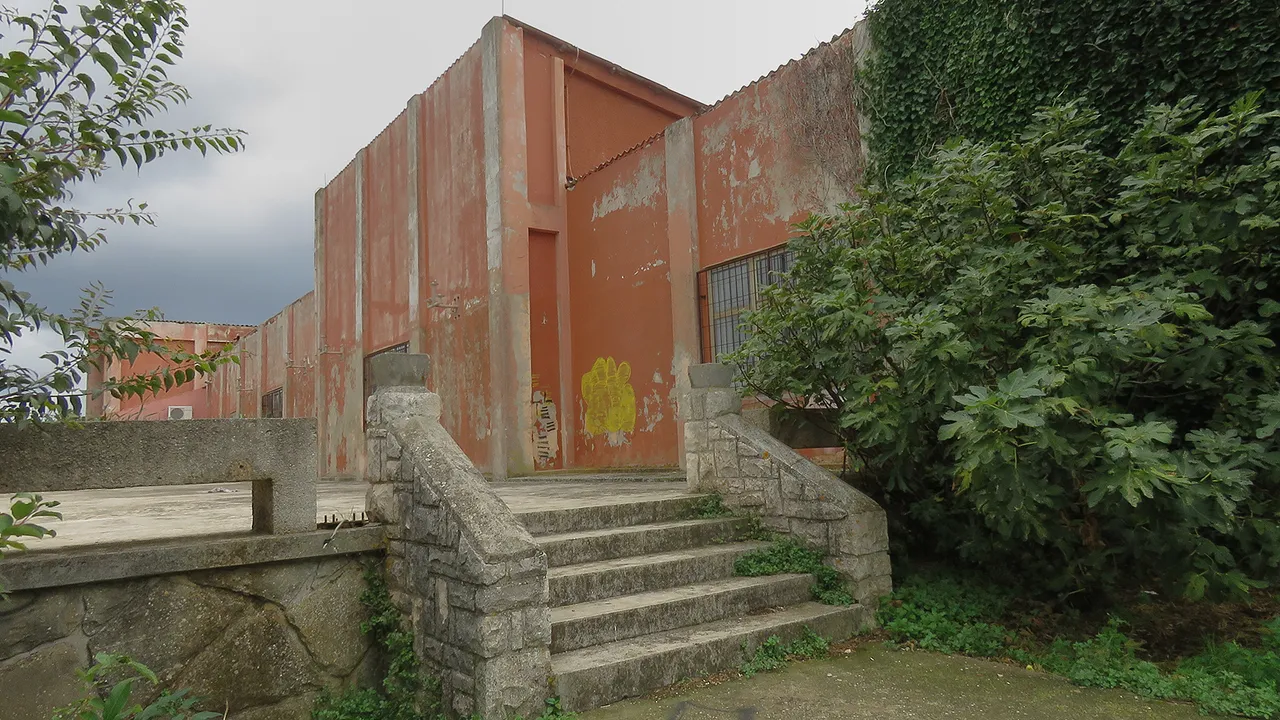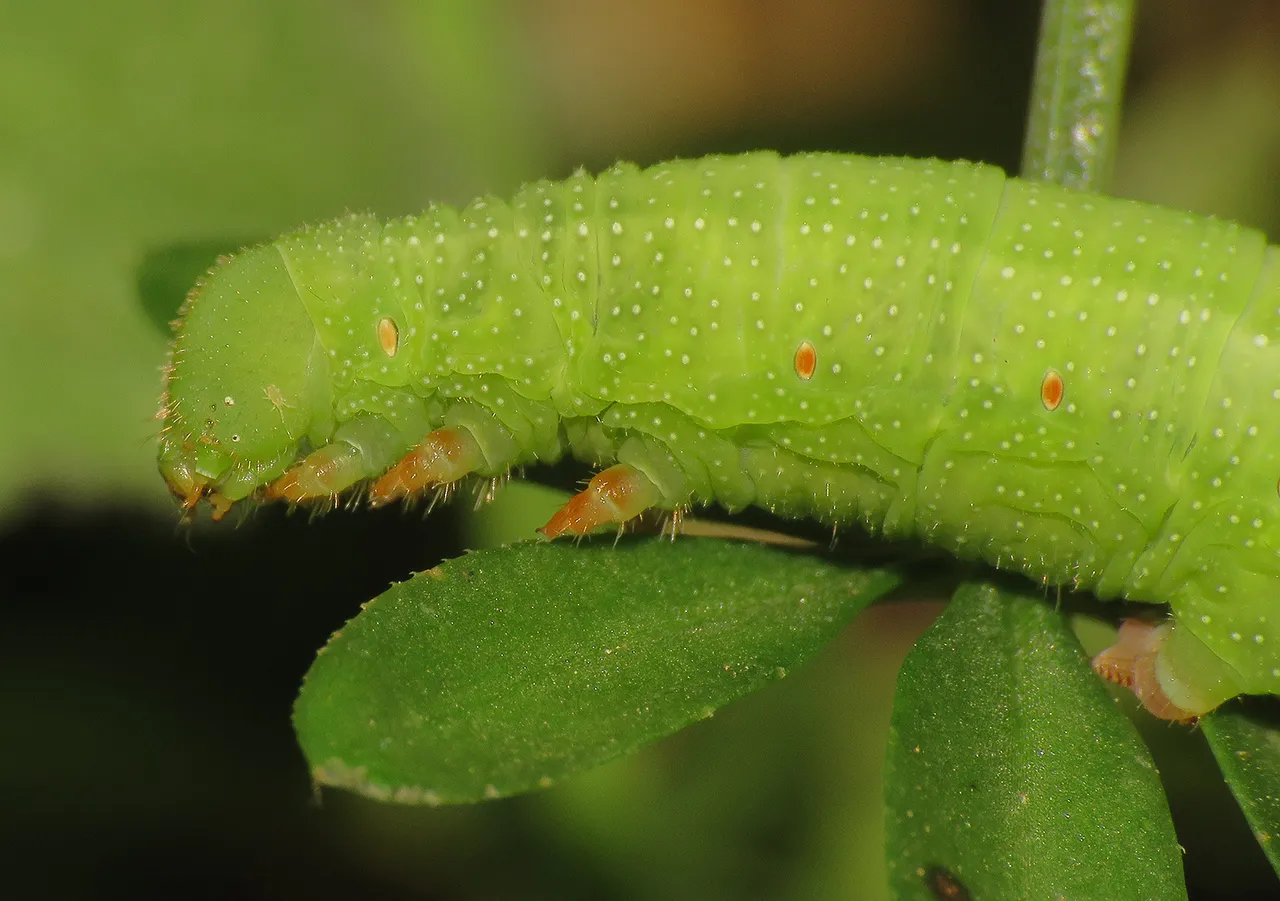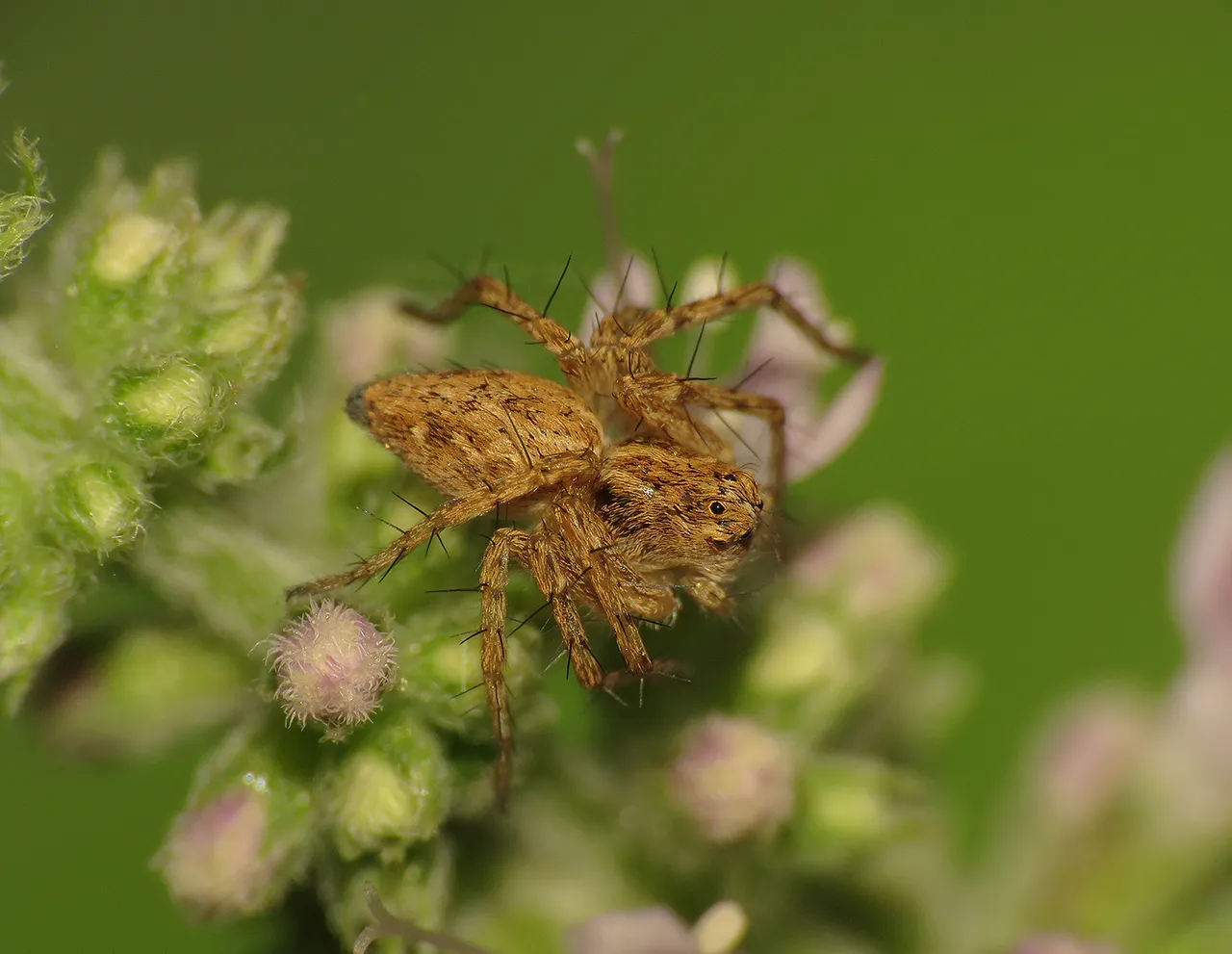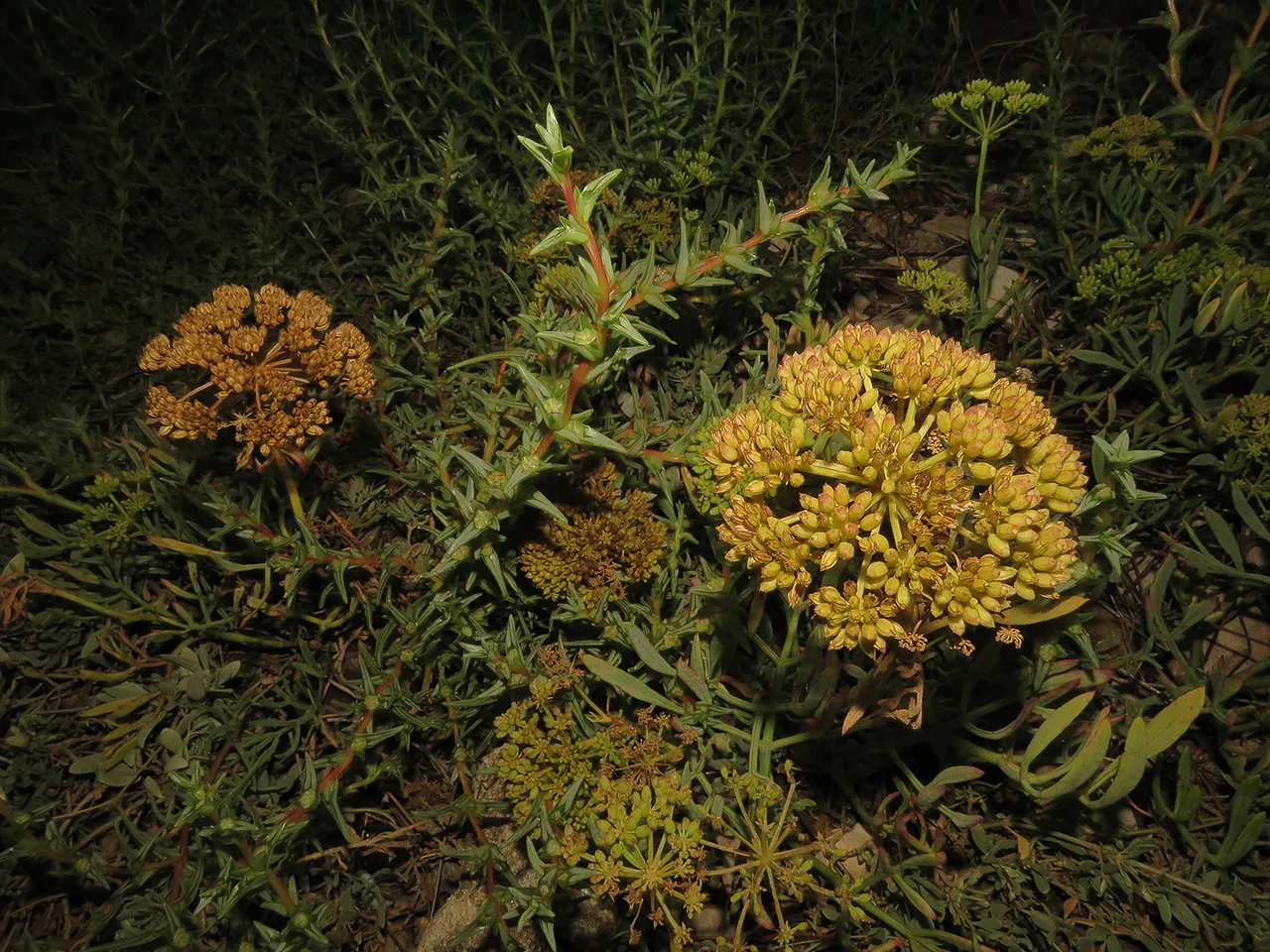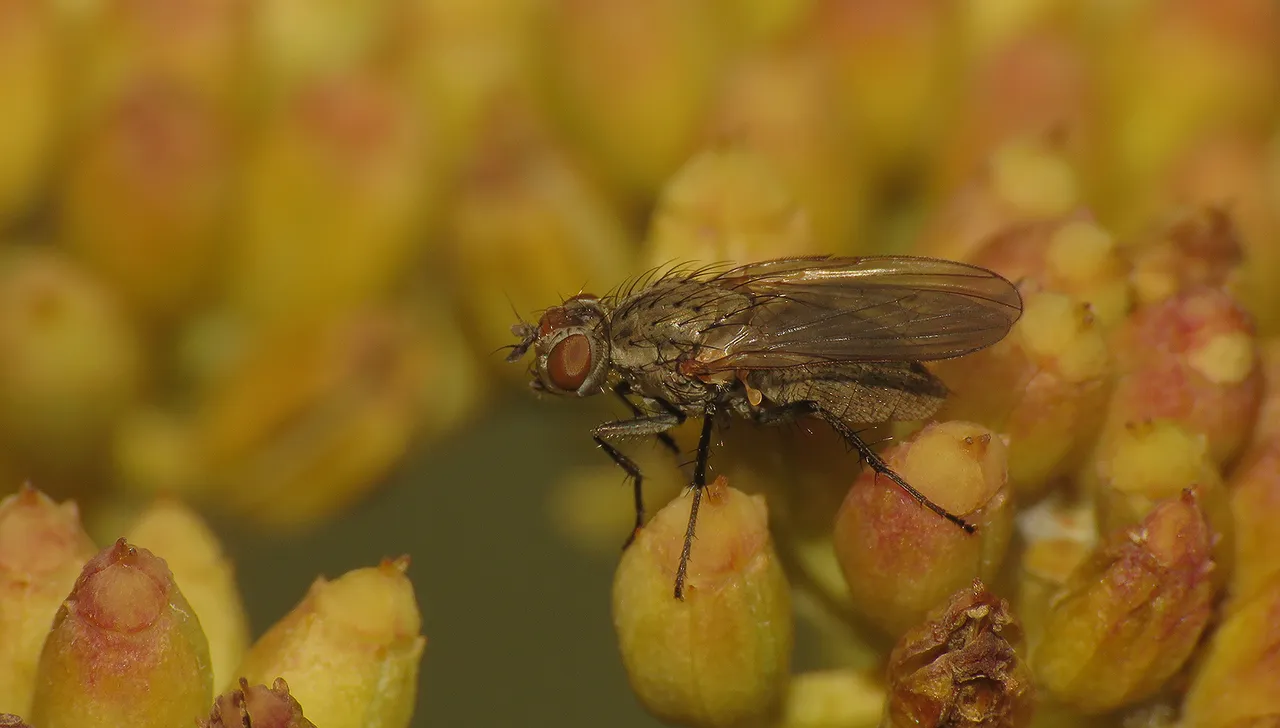About a month ago, on the 25th of September, I spent an hour in the bay of Liznjan. Some friends were there with me, and while they were photographing the boats and birds in the small harbor, I was exploring the coastal vegetation, through the macro lens mostly.
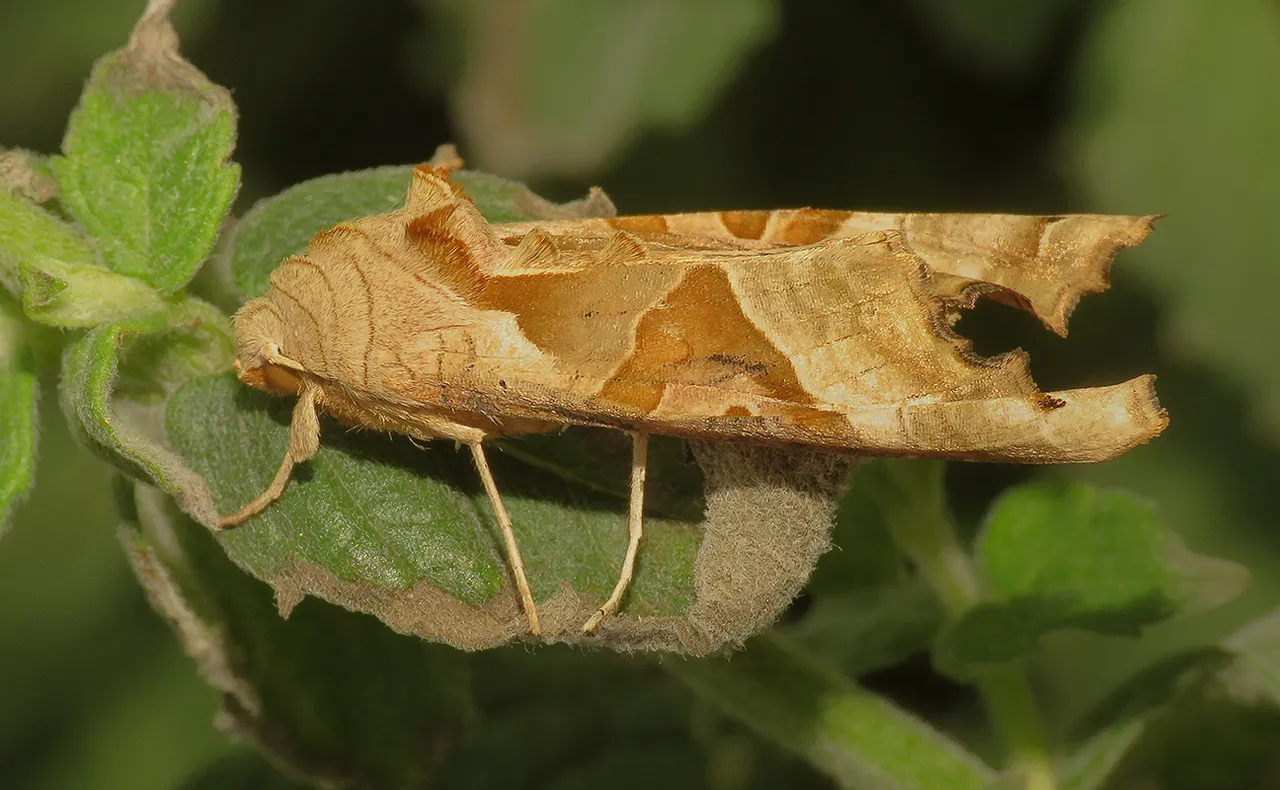
This interesting moth was the first insect I encountered on that occasion.
Here you can take a better, more up-close look at its cute face.
Phlogophora meticulosa is the name of this species from the Noctuidae family. Its common name is angle shades.
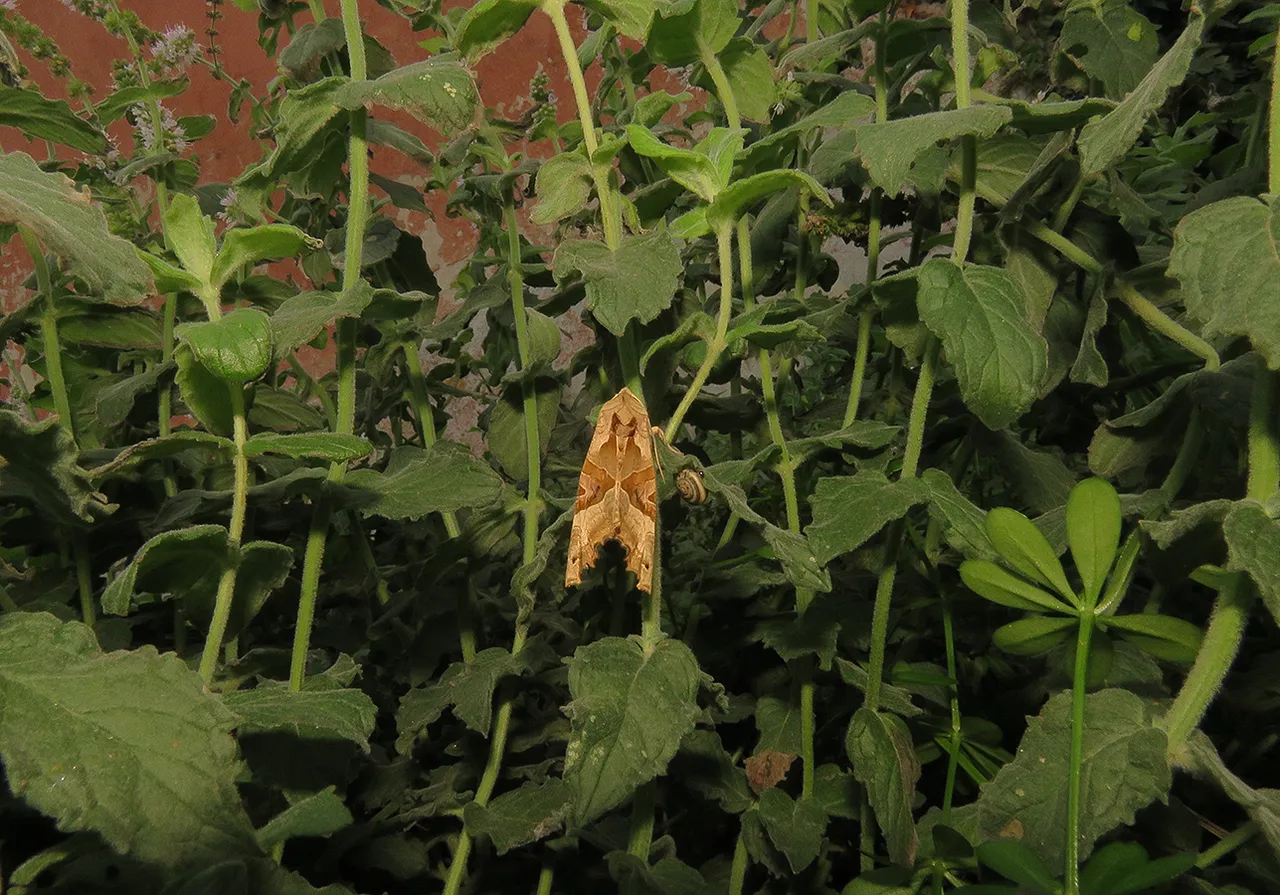
These moths fly mainly at night. During the day, you can often see the resting on the herbaceous vegetation. In this case ...
... the Phlogophora meticulosa was resting in the dense growth of the fragrant apple mint (Mentha suaveolens) plants ...
... that still prosper behind this old red building that was once a tomato processing factory.
Also there, in the mint ...
... I found a well-camouflaged green caterpillar. I haven't noticed it there while watching the larva through the macro lens, but ...
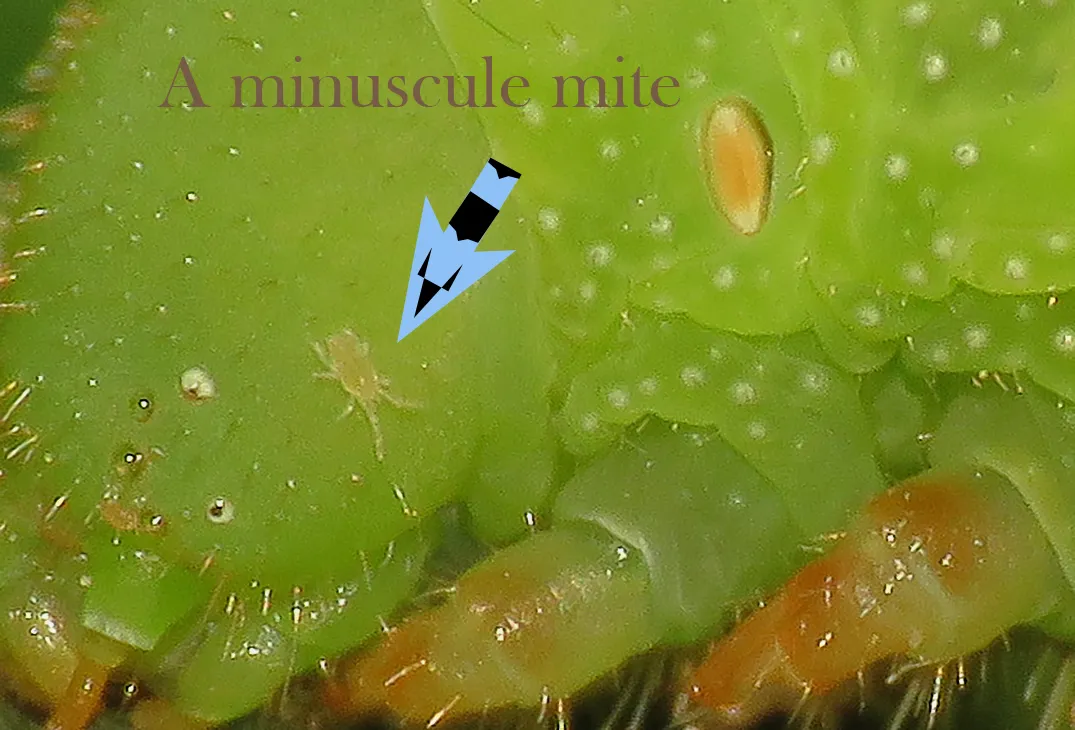
... but today, while preparing the photographs for the post, I noticed a minuscule mite on its head.
This caterpillar is a larval stage of the hummingbird hawk-moth (Macroglossum stellatarum).
In this photograph, you can take a better, more up-close look at the horn on its rear end. The small spider, shown in the following picture ...
... was resting or waiting in ambush on the tiny Mentha suaveolens flowers, high on the top of the plant. I decided to show the scene in the diagonal composition because it looked much better that way, but ...

... but the spider was comfortably situated upside down in a vertical position. This is a juvenile lynx spider. Oxyopidae family. Oxyopes heterophthalmus is the name of the species.
On some other plant, can't tell you which one exactly, that was growing mixed with the mint, I photographed the Nomophila noctuella, a moth from the Crambidae family. I was able to take only one photograph before the insect flew away.
Meanwhile, the Phlogophora meticulosa was motionless in the same place.
This small butterfly, the Plebejus argus from the Lycaenidae family ...
... was photographed on the Dittrichia viscosa. The day was very cloudy. The storm was approaching, and the light was pretty low for macro photography. So I used the flash of my camera for most of these photographs.
Here you can see the same butterfly in the ambient light.
This is the Salsola soda plant. Haven't found any insect on it, but ...

... but on the nearby Crithmum maritimum, I photographed a small fly.
Here you can take a look at the mix of succulent plants that grew closer to the sea. The focus is on two species mentioned before, the Salsola soda and the Crithmum maritimum.
The fly is the Adia cinerella, a species from the Anthomyiidae family.
The following links will take you to the sites with more information about some of the protagonists of this post. I found some stuff about them there.
https://butterfly-conservation.org/moths/angle-shades
https://en.wikipedia.org/wiki/Mentha_suaveolens
https://en.wikipedia.org/wiki/Hummingbird_hawk-moth
https://en.wikipedia.org/wiki/Oxyopes_heterophthalmus
https://en.wikipedia.org/wiki/Salsola_soda
https://en.wikipedia.org/wiki/Silver-studded_blue
https://en.wikipedia.org/wiki/Adia_cinerella
AND THAT'S IT. I SHOWED YOU ALL I FOUND IN THE BAY BACK THEN ON THE 25th OF SEPTEMBER. AS ALWAYS HERE ON HIVE, THE PHOTOGRAPHS ARE MY WORK - THE END.




